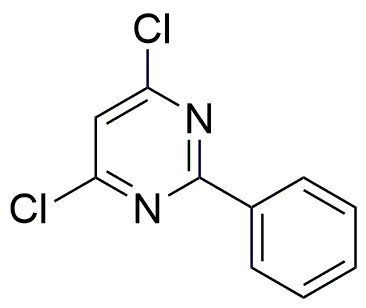Fenclorim is widely utilized in research focused on:
- Agriculture: As a selective herbicide, it effectively controls a variety of broadleaf weeds in crops, enhancing yield and quality for farmers.
- Plant Protection: It is used in formulations that protect crops from weed competition, allowing for better growth and productivity in agricultural practices.
- Environmental Studies: Researchers utilize fenclorim to study its environmental impact and behavior in soil and water, contributing to sustainable agricultural practices.
- Phytotoxicity Research: It serves as a model compound in studies assessing the phytotoxic effects of herbicides, helping to develop safer alternatives for crop management.
- Formulation Development: The compound is valuable in developing new herbicide formulations that require specific properties for targeted weed control, offering advantages over traditional herbicides.
General Information
Properties
Safety and Regulations
Applications
Fenclorim is widely utilized in research focused on:
- Agriculture: As a selective herbicide, it effectively controls a variety of broadleaf weeds in crops, enhancing yield and quality for farmers.
- Plant Protection: It is used in formulations that protect crops from weed competition, allowing for better growth and productivity in agricultural practices.
- Environmental Studies: Researchers utilize fenclorim to study its environmental impact and behavior in soil and water, contributing to sustainable agricultural practices.
- Phytotoxicity Research: It serves as a model compound in studies assessing the phytotoxic effects of herbicides, helping to develop safer alternatives for crop management.
- Formulation Development: The compound is valuable in developing new herbicide formulations that require specific properties for targeted weed control, offering advantages over traditional herbicides.
Documents
Safety Data Sheets (SDS)
The SDS provides comprehensive safety information on handling, storage, and disposal of the product.
Product Specification (PS)
The PS provides a comprehensive breakdown of the product’s properties, including chemical composition, physical state, purity, and storage requirements. It also details acceptable quality ranges and the product's intended applications.
Certificates of Analysis (COA)
Search for Certificates of Analysis (COA) by entering the products Lot Number. Lot and Batch Numbers can be found on a product’s label following the words ‘Lot’ or ‘Batch’.
*Catalog Number
*Lot Number
Certificates Of Origin (COO)
This COO confirms the country where the product was manufactured, and also details the materials and components used in it and whether it is derived from natural, synthetic, or other specific sources. This certificate may be required for customs, trade, and regulatory compliance.
*Catalog Number
*Lot Number
Safety Data Sheets (SDS)
The SDS provides comprehensive safety information on handling, storage, and disposal of the product.
DownloadProduct Specification (PS)
The PS provides a comprehensive breakdown of the product’s properties, including chemical composition, physical state, purity, and storage requirements. It also details acceptable quality ranges and the product's intended applications.
DownloadCertificates of Analysis (COA)
Search for Certificates of Analysis (COA) by entering the products Lot Number. Lot and Batch Numbers can be found on a product’s label following the words ‘Lot’ or ‘Batch’.
*Catalog Number
*Lot Number
Certificates Of Origin (COO)
This COO confirms the country where the product was manufactured, and also details the materials and components used in it and whether it is derived from natural, synthetic, or other specific sources. This certificate may be required for customs, trade, and regulatory compliance.


